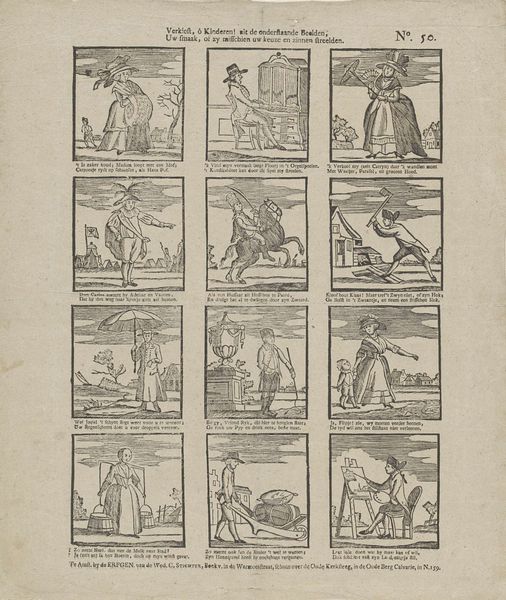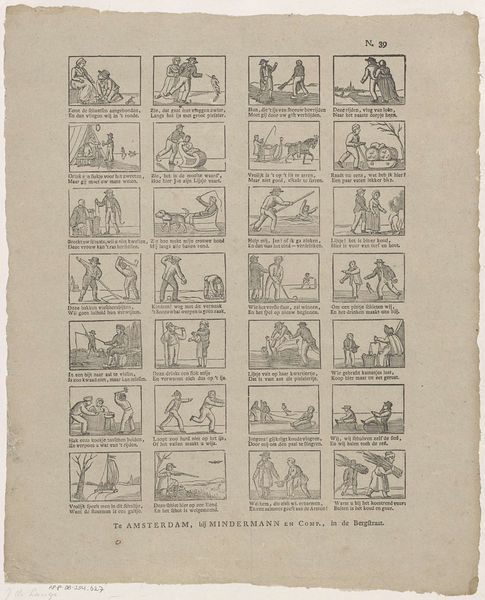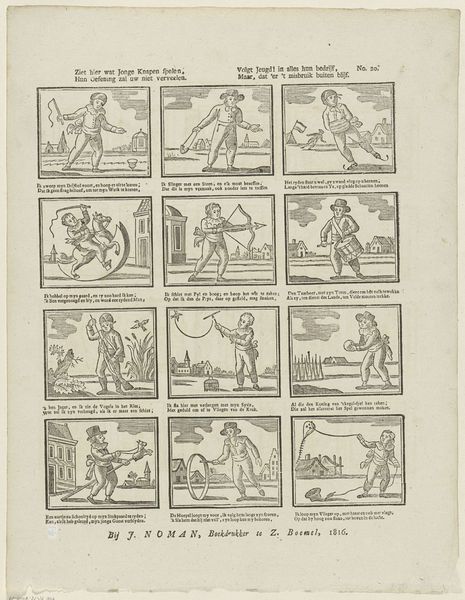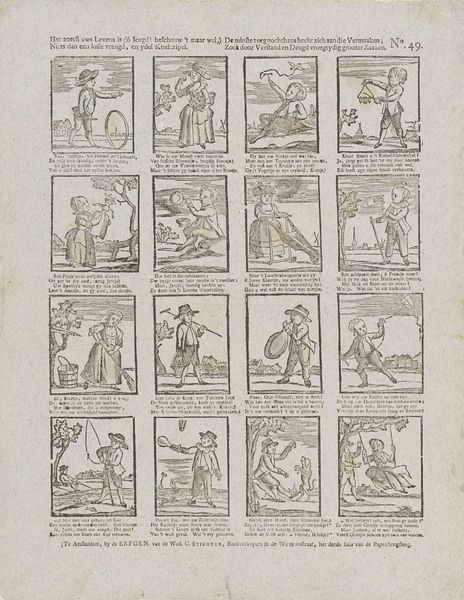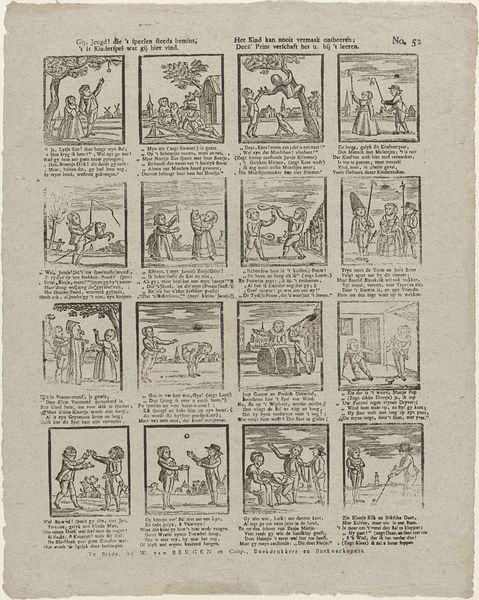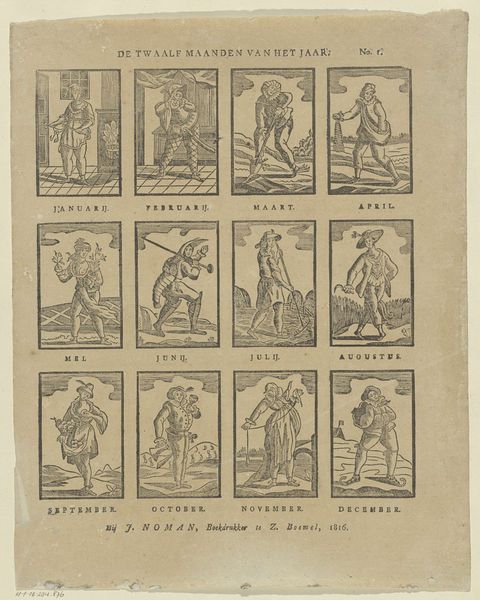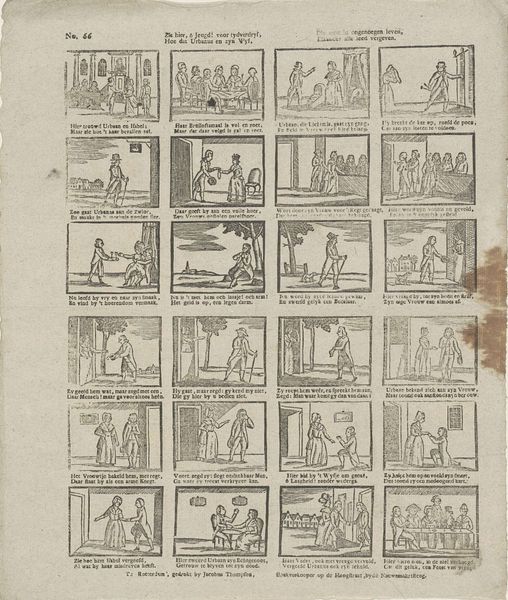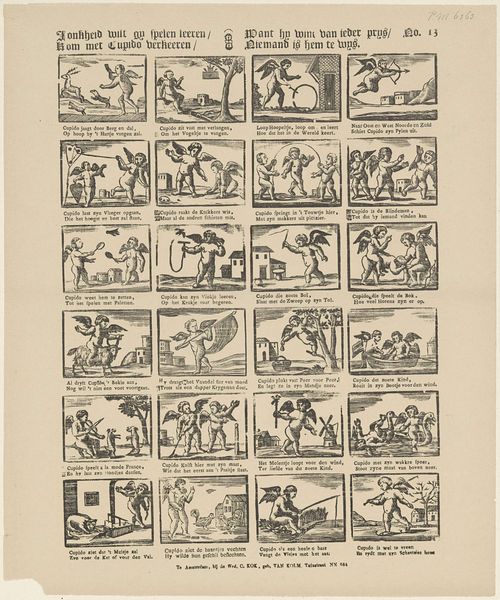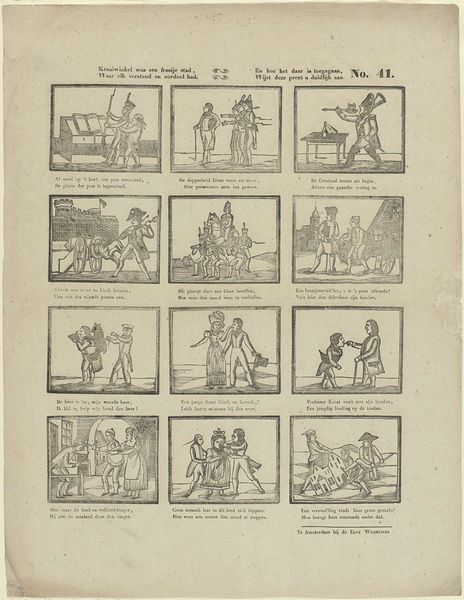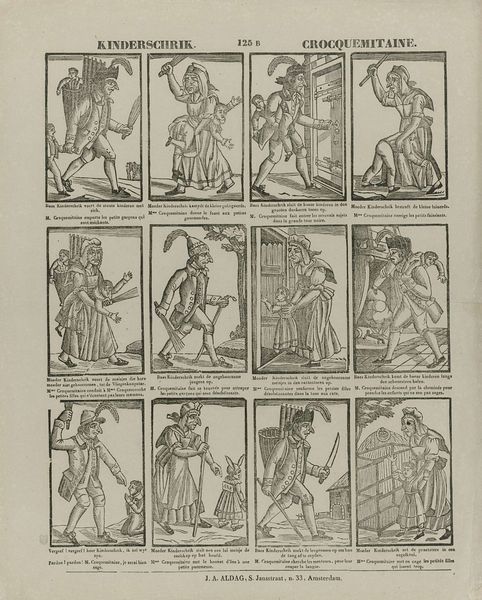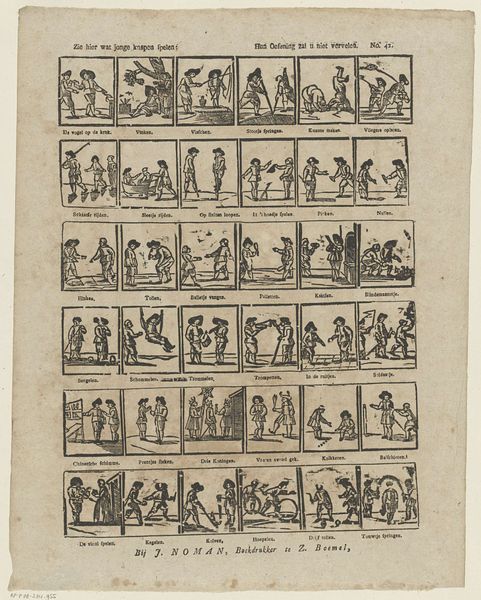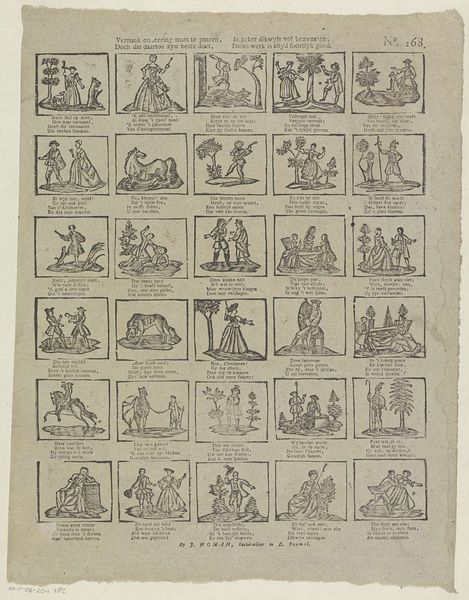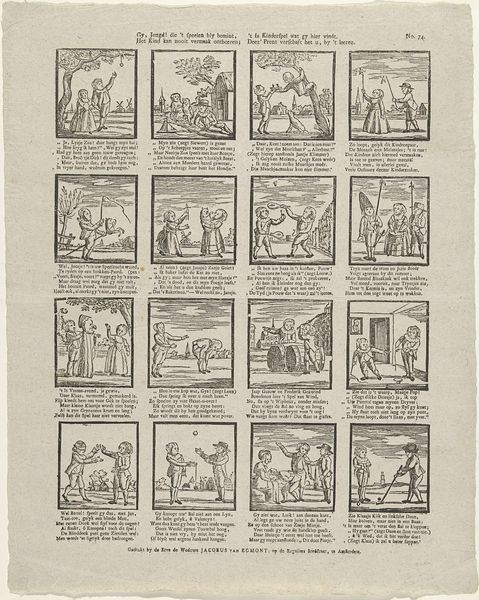
Zie hier wat jonge knapen spelen, / Hun oeffening zal u niet vervelen; / Volg jeugd in alles hun bedryf, / Maar, dat er 't misdryf buiten blyf 1818 - 1848
0:00
0:00
print, paper, engraving
#
narrative-art
# print
#
old engraving style
#
paper
#
folk-art
#
romanticism
#
genre-painting
#
academic-art
#
engraving
Dimensions: height 410 mm, width 327 mm
Copyright: Rijks Museum: Open Domain
Curator: This print, made between 1818 and 1848, is titled "Zie hier wat jonge knapen spelen, / Hun oeffening zal u niet vervelen; / Volg jeugd in alles hun bedryf, / Maar, dat er 't misdryf buiten blyf," made by Mindermann & Co. It's currently held at the Rijksmuseum. My initial impression is how quaint and structured it is, with its ordered scenes and slightly faded appearance. It gives off an old-fashioned, didactic feeling. Editor: Quaint is one word for it. To me, it's a reflection of a specific social narrative, seemingly encouraging boys toward disciplined, guilt-free play. The bordering inscription essentially dictates a model for proper youth development, suggesting a controlled experience devoid of wrongdoing. What social scripts were in play at this time? Curator: From a formal perspective, the artist has presented a dozen vignettes depicting various scenes of children's games, each enclosed within its own rectangular border. The figures, though simple, are carefully posed and the linear engraving gives a sense of ordered movement. Notice how the composition emphasizes clear outlines. Editor: But what strikes me is the complete absence of girls. The construction of masculinity seems to be the central, unacknowledged theme here. Furthermore, it romanticizes a certain kind of play under what could be an elitist paradigm. The suggestion "follow youth in everything they do" speaks volumes about social expectations. Curator: Certainly the absence of girls is noticeable. We could see the arrangement as almost emblematic—each scene offers a purified moment. In terms of Romanticism, which is indicated as the style, this piece leans towards sentimentality—the notion that childhood is simple and should be cherished—a key Romantic concept, without the complexity of Realism. Editor: It reflects a vision of society attempting to instill bourgeois virtue while controlling the messy realities of daily life. What the artist chooses *not* to show–inequality, transgression–speaks louder than the idealized scenes. What power dynamics are concealed behind this emphasis on innocent amusement? Curator: Viewing the work through a formal lens, the artist's use of line, form, and space certainly convey this idea, but its deeper meanings might also be accessible simply by observing this method, even outside those considerations. Editor: I agree, although a complete understanding must include acknowledging the period’s social frameworks which directly influenced its messages. What could be an artwork celebrating play is actually a visual handbook on expected conduct.
Comments
No comments
Be the first to comment and join the conversation on the ultimate creative platform.
